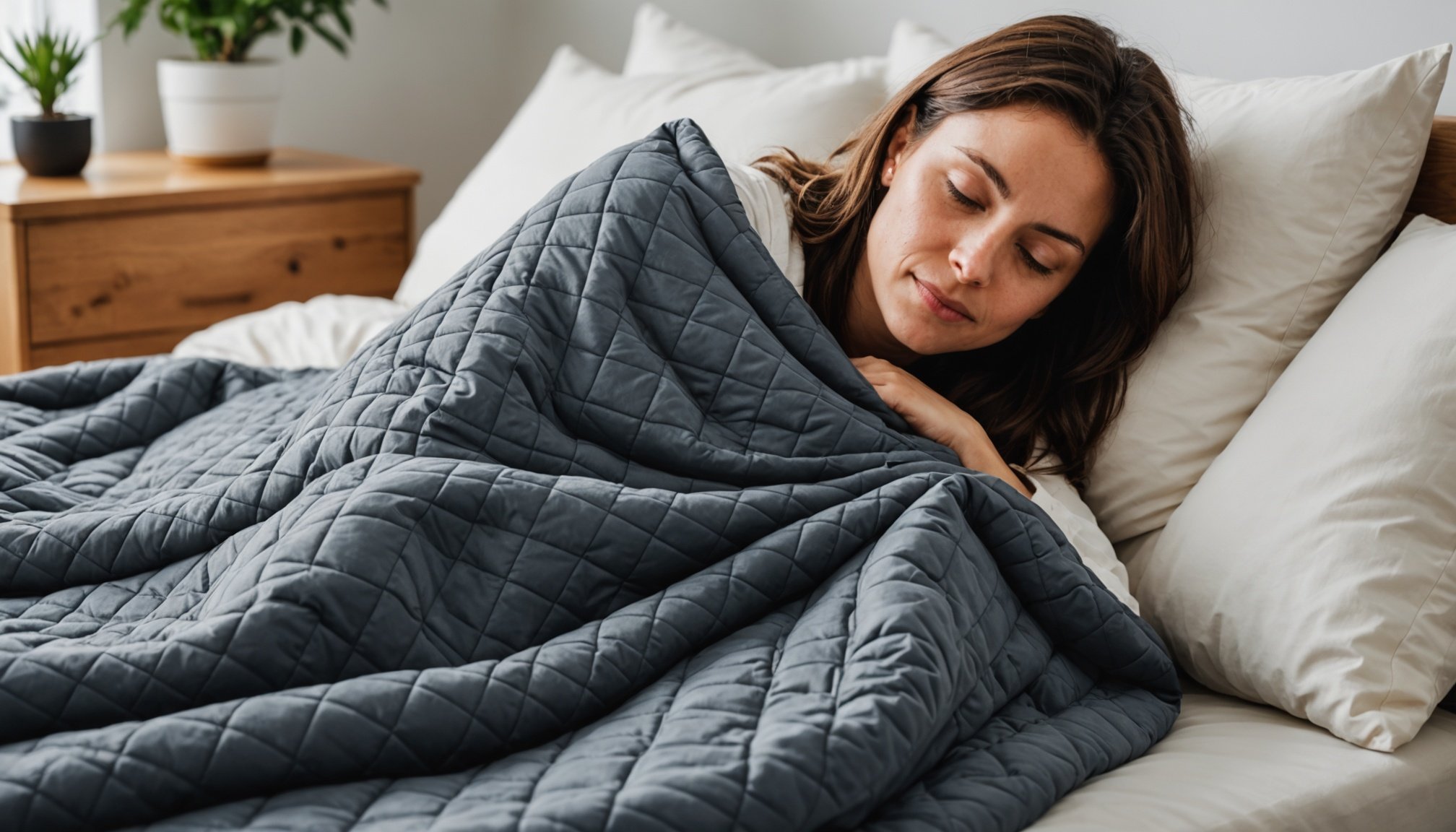Understanding ADHD and Sleep Issues
Attention Deficit Hyperactivity Disorder (ADHD) is a condition that not only affects focus and behavior but can also lead to sleep issues. Adults with ADHD often experience difficulties in maintaining consistent sleep patterns, which can exacerbate the symptoms of ADHD itself.
The sleep quality of individuals with ADHD is frequently compromised. This is due to symptoms such as hyperactivity and impulsivity that can make unwinding before bed challenging. Additionally, inattentiveness can lead to irregular sleep schedules, as individuals might lose track of time and postpone sleep. These habits contribute to a cycle of sleep disorders.
Also to read : Empowering Adolescents with Type 1 Diabetes: The Role of Customized Nutritional Counseling
Adults with ADHD are more prone to certain sleep disorders such as insomnia, restless legs syndrome, and delayed sleep phase syndrome. These disorders involve challenges like difficulty falling asleep, staying asleep, or waking up too early. This lack of restorative sleep can significantly affect daytime functioning, leaving individuals feeling constantly tired and unable to manage ADHD symptoms effectively.
The importance of quality sleep for those with ADHD cannot be overstated. Sleep is crucial for cognitive functions such as memory, concentration, and problem-solving, already areas of difficulty for many with ADHD. Improving sleep quality can thus alleviate some ADHD symptoms and enhance overall well-being.
In the same genre : Revolutionizing Diabetes Care: The Impact of Continuous Glucose Monitoring on Effective Management
Mechanism of Weighted Blankets
Weighted blankets, often celebrated for their comforting embrace, rely heavily on a concept known as deep touch pressure. This technique involves applying a gentle, evenly distributed weight across the body, reminiscent of a soothing hug. Such pressure triggers the release of neurotransmitters like serotonin and dopamine, which naturally promote a sense of well-being and calm. This makes these blankets particularly beneficial for individuals seeking restful sleep or relief from stress and anxiety.
The calming effect of weighted blankets stems from the gentle pressure they apply, which stimulates sensory receptors on the skin. This stimulation not only enhances mood but also can lead to a decrease in the production of cortisol—the hormone associated with stress. By leveraging deep touch pressure, these blankets mimic therapeutic techniques commonly used in occupational therapy to improve relaxation and sleep quality.
Scientifically, the use of weighted blankets for sleep therapy is gaining traction. Studies suggest they can significantly enhance sleep by reducing tossing and turning. Moreover, the therapeutic nature of deep touch pressure is linked to improvements in sleep disorders, including insomnia and anxiety-induced restlessness. In the pursuit of a good night’s sleep, the right weighted blanket can make all the difference, providing comfort and emotional balance.
Research Findings on Weighted Blankets and Sleep Quality
Recent scientific studies have shown that weighted blankets can significantly improve sleep quality, particularly in individuals with ADHD. These blankets leverage deep touch pressure therapy to create a calming effect, beneficial for a restful night’s sleep.
Overview of Major Studies
The exploration of weighted blankets in sleep improvement research has yielded promising results. Several scientific studies focus on their effects on sleep disorders, including a study published in the journal “Sleep Medicine Reviews.” This study revealed that participants experienced longer sleep times and reduced insomnia symptoms when using a weighted blanket.
Key Findings Related to Adults with ADHD
For adults with ADHD, weighted blankets have emerged as a transformative tool. A notable ADHD research published in the journal “Journal of Clinical Sleep Medicine” reported improvements in attention and decision-making post-intervention, highlighting a decrease in anxiety levels and an increase in melatonin production.
Comparative Analysis with Traditional Sleep Aids
When weighing weighted blankets against traditional sleep aids, differences become apparent. Unlike pharmaceuticals that might present side effects, weighted blankets offer a natural sleep improvement method. Some studies even show that they may help reduce reliance on medication, presenting an advantageous alternative to traditional options while delivering effective support for improved sleep quality.
Benefits of Using Weighted Blankets for Sleep
Weighted blankets have gained popularity for providing enhanced relaxation and stress reduction, significantly benefiting sleep quality. By simulating the feeling of a comforting embrace, these blankets can reduce anxiety levels, promoting a sense of calmness that’s crucial for falling and staying asleep.
The benefits extend beyond just stress reduction. Many users report experiencing improved overall sleep duration and quality. The gentle pressure from a weighted blanket encourages the production of serotonin and melatonin, hormones responsible for mood regulation and sleep initiation, respectively. This makes it easier to achieve a deeper, more restful sleep cycle.
Moreover, the long-term benefits on health and well-being cannot be understated. Consistently using a weighted blanket may lead to lower blood pressure, reduced heart rates, and a boost in well-being. The consistent use can also contribute to alleviating conditions associated with anxiety disorders, insomnia, or even chronic pain, all of which disrupt regular sleep patterns.
It’s important to choose a blanket that suits your weight and preferences, typically around 7-12% of your body weight, to experience the full range of benefits a weighted blanket offers. Investing in the right blanket can be a practical step towards achieving better, more restful sleep, ultimately enhancing overall life quality.
Potential Drawbacks of Weighted Blankets
While weighted blankets offer numerous benefits, there are certain drawbacks that users should consider before making a purchase. One primary concern revolves around the possible discomfort or restriction they may cause during sleep. Some individuals report feeling constricted, as if unable to move freely, which can disturb sleep patterns rather than enhance them.
Another significant factor involves safety considerations for specific populations. Individuals with respiratory issues, such as asthma or sleep apnea, may face heightened risks due to the additional weight on their chest, potentially exacerbating these conditions. Similarly, those with circulation problems should approach weighted blankets with caution.
Proper weight selection is crucial. A blanket that’s too heavy can cause further discomfort and may pose unnecessary safety risks. Experts recommend selecting a blanket that is approximately 10% of the user’s body weight to ensure a balance between comfort and efficacy. Incorrect weight choice could lead to discomfort, rendering the blanket ineffective for its intended purpose.
Importantly, usage should always be tailored to the individual’s needs, and those unfamiliar with weighted blankets should consult with a healthcare provider to address any concerns related to their specific health conditions. By doing so, users can enjoy the therapeutic benefits of weighted blankets while mitigating potential drawbacks.
Practical Tips for Using Weighted Blankets
When trying to achieve a restful night’s sleep with a weighted blanket, personalised attention to details can make a significant difference. The following insights offer guidance on optimising comfort and effectiveness in your sleep routine.
Selecting the Right Weighted Blanket
Choosing the correct weighted blanket involves considering weight and size. It’s generally recommended that the blanket’s weight should be around 10% of your body weight. For instance, a person weighing 150 pounds might benefit from a 15-pound blanket. Additionally, ensure that the blanket covers your body adequately without excess material dragging onto the floor.
Creating an Optimal Sleep Environment
An effective sleep environment is crucial. Consider the temperature in your room; a cooler setting can enhance the benefits of a weighted blanket by reducing body heat build-up. Also, dim lighting and a noise-free atmosphere contribute to an ideal setting, allowing the weighted blanket’s calming pressure to shine.
Incorporating into a Nighttime Routine
Integrating a weighted blanket into your nighttime routine can be seamless. Start by laying the blanket over your regular bedding, ensuring it directly contacts you. Use it consistently alongside your usual sleep habits, such as reading or meditating, to help signal to your body it’s time to relax and rest.
Testimonials and Personal Experiences
Delving into the realm of real-life stories offers invaluable insights into the everyday experiences of adults living with ADHD. These personal stories often highlight the array of challenges and successes faced by individuals, providing a nuanced understanding of the condition. In many testimonials, adults express how community feedback, particularly from support groups, has been instrumental in navigating their unique journeys.
User experiences vary significantly. Some adults share narratives of enhanced productivity and focus, attributing improvements to specific strategies. Others convey ongoing struggles despite attempts at various interventions. This diversity in outcomes underscores the necessity of personalized approaches in managing ADHD.
In support groups, individuals often find solace and empowerment. These forums become safe spaces to exchange tips, foster encouragement, and gain perspective on shared difficulties. Insights gained here are not just about immediate relief but also include long-term coping mechanisms that prove beneficial over time.
Personal stories serve as a beacon for those newly diagnosed, offering a range of perspectives. While these testimonials reveal individual struggles, they equally highlight resilience and the potential for positive change. Such experiences remind others that they are not alone, cultivating a sense of community and shared understanding.











